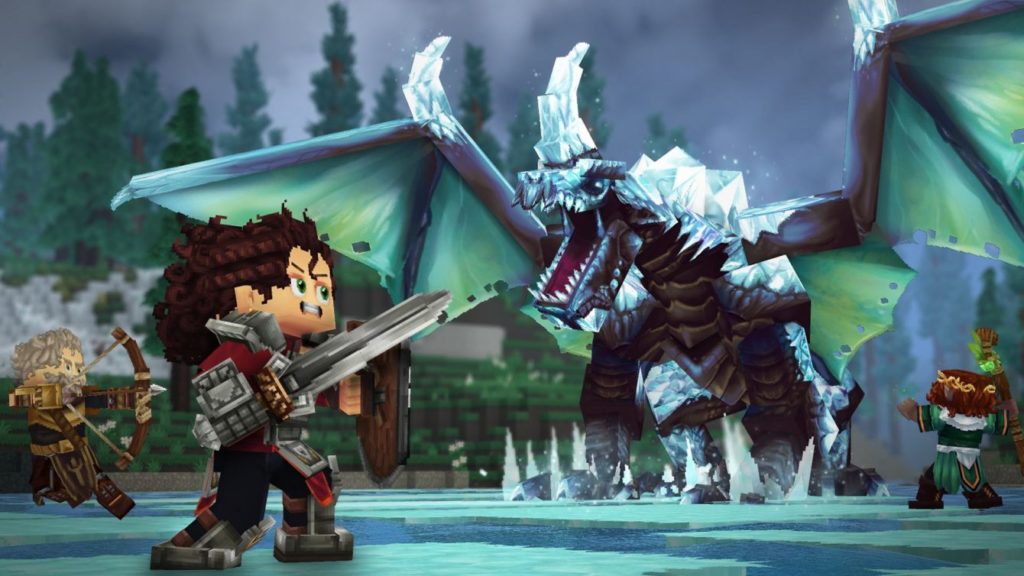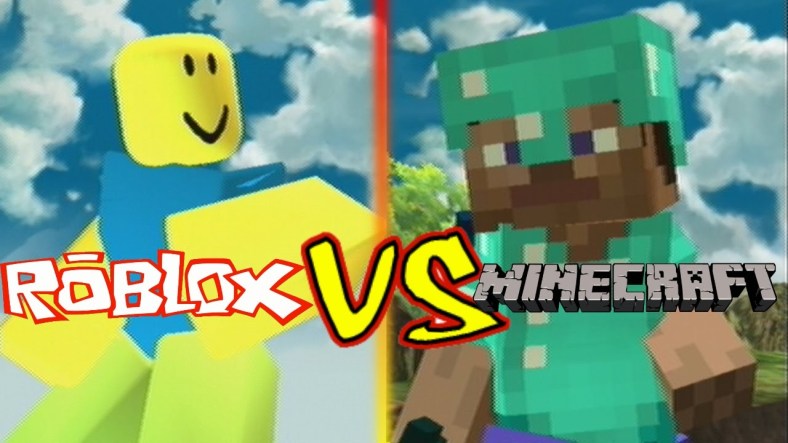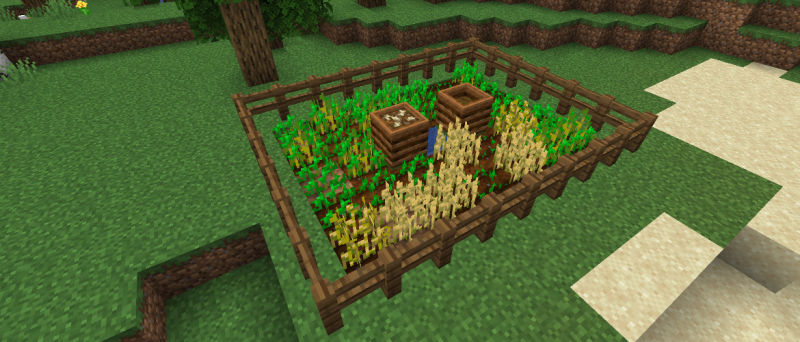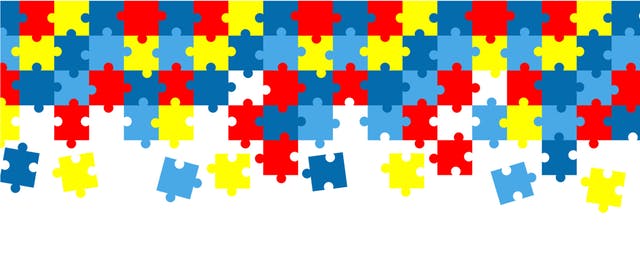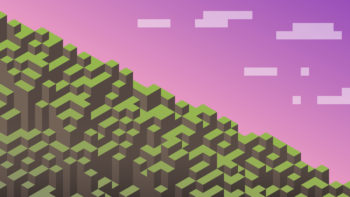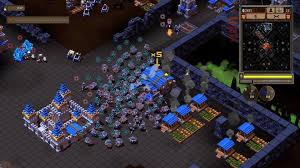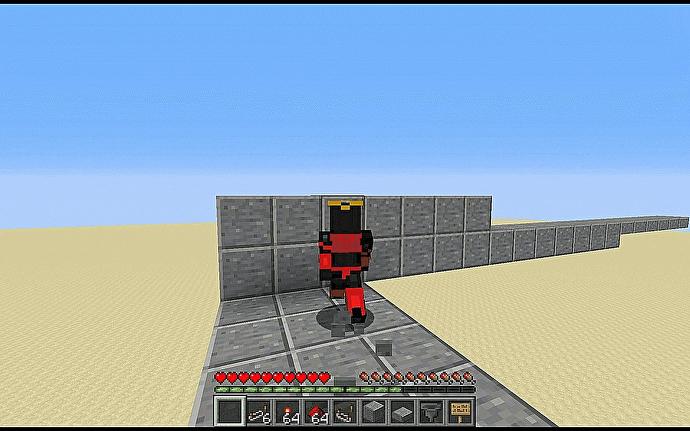UT System helps create game to teach chemistry through Minecraft
The UT System and Kate the Chemist are using video games to spark interest in STEM with their new Careers in Chemistry project.
Careers in Chemistry was created with help from DISCO Learning Media, a UT alumni-created education innovation company, for the website Minecraft: Education Edition, a version of the popular video game Minecraft. In Minecraft Edu, players use the open-world crafting mechanics to explore topics ranging from coding to art and design. The module will be available for download in the middle of February through the Minecraft Edu website.
The UT System brought on Kate Biberdorf, also known as Kate the Chemist, to help write the project. Biberdorf’s innovative chemistry demonstrations launched her into national popularity with appearances on The Late Show with Stephen Colbert and The Wendy Williams Show.
“When you step into a digital platform, you really can tap into the make-believe, but in reality you’re showing them how these (chemical) pieces can come together,” chemistry professor Biberdorf said. “They think they’re doing magic but really it’s science, and it’s just a great way to promote the level of STEM.”
Through Careers in Chemistry, players will explore four unconventional chemistry-based career paths: chef, science journalist, chemistry teacher and art conservationist. The game will guide them through activities based on these jobs in which the player will combine chemicals to achieve in-game goals.
“Chemistry is one of the most popular subjects in the Minecraft Education environment right now … but what was overall lacking was this idea of how you actually get a career in chemistry,” DISCO President Juan Garcia said. “Minecraft educators are trying to target high school age ranges with their content, so we thought this was a perfect opportunity.”
The classic version of Minecraft has over 91 million monthly players, a large chunk of which are under the age of 21. This age group has seen a 12 percent decline of interest in STEM careers between 2017 and 2018, according to Junior Achievement, a nonprofit dedicated to youth education.
Nichole Prescott, assistant vice chancellor for Academic Affairs, said this game is part of the UT System’s overall goal to reinvigorate interest in STEM and prepare K-12 students for college.
According to the National Assessment of Educational Progress’ 2015 assessments, only 25 percent of high school seniors are proficient in math and only 22 percent are proficient in science.
“When we look at the educational attainment in the state of Texas, there are some major gaps and there are a lot of gaps in STEM fields,” Prescott said. “Even within the STEM fields, there’s not a lot of diversity of students going into STEM, so we really want to increase access of students of all types to get interested in going into a STEM field.”
Biberdorf said she joined the project to inspire young people, especially girls, to join STEM fields.
“There’s something about that middle school age where … all of a sudden, girls believe that they can’t do science or can’t do math,” Biberdorf said. “What I’m hoping to do is open the doors for more girls, and boys in general, and show them what you could do with this knowledge.”
Cloud-based gaming closer to coming true
When Cory Burdette awoke recently to learn that Winter Storm Gia had caused a two-hour school delay in Reston, Va., he seized the chance to do a little family bonding. Plopping down in front of the TV, Burdette and his 5-year-old daughter spent the morning together playing “Minecraft,” the Lego-like adventure game where players construct buildings out of virtual blocks.
“We play all our games together on the Xbox,” he said. “In ‘Minecraft,’ we both get to build a house together, find monsters and explore.”
The first time he fired up the game, Burdette had to wait for “Minecraft” to download and install on his Xbox before launching it. But by the time his daughter is old enough to play more adult games, that wait could be a thing of the past.
Major companies from Microsoft to Verizon are exploring how to replace game downloads with Internet-based game services hoping to do for video gaming what Netflix and Spotify have done with TV and music. Instead of being run directly from a device, high-quality games of the future could be streamed from a data center, with most of the computations and image rendering being performed by powerful servers many miles away before being piped online to players’ phones, PCs and consoles.
Unlike passive forms of media such as movies and music, playing games over the Internet calls for highly responsive technology that can interpret a player’s actions from afar, process them within milliseconds and relay the results back to the player and her opponents instantaneously.
The challenge has stymied gamers and game companies for years. But with advances in computing power, the adoption of high-speed broadband and fresh investments by tech behemoths, what was once a lofty technological and cultural goal for the game industry now seems closer at hand than at any point in the past decade.
“Game streaming services will be the ultimate driver of a rapid transition from the sale of games in boxes to digital consumption,” Yosuke Matsuda, president of the game company Square Enix, declared in a New Year’s letter to the public. “Streaming also lends itself to new subscription-based business models, so we believe deciding how to engage with these forthcoming trends will be key to future growth.”
As more Americans turn to mobile and online entertainment, executives across the media landscape have recognized that they are competing for the same, quickly diminishing resource: consumer attention. Even Netflix this month acknowledged that it views the hit game “Fortnite” as an even bigger competitor in some respects than HBO.
In the war for consumer attention, cloud-based gaming represents tens of billions in additional profit for game publishers alone, analysts say. Beyond the simple convenience of playing games off a central server, what makes the idea so attractive is the capability to turn even the weakest laptop into a fully functional gaming rig.
That could make it far easier for people to play video games on whatever device they have, wherever they may be, according to Brian Nowak, an industry analyst at Morgan Stanley. “As a base case, this new technology has the opportunity to expand the addressable player base by lowering barriers to entry around AAA games,” Nowak wrote in a research note this month.
Recent high-profile experiments with cloud-based gaming include Google’s Project Stream, which wrapped up a beta trial this month that allowed testers to play “Assassin’s Creed: Odyssey” online for free; Microsoft’s Project xCloud, which promises to enable game streaming over mobile data connections; and Verizon Gaming, leaks of which emerged earlier this month. On Monday, reports suggested that Apple may be planning a cloud-based games service of its own, and e-commerce giant Amazon is also said to be doing the same. (Amazon chief executive Jeff Bezos owns The Washington Post.)
The jolt of interest in cloud-based gaming reflects how quickly the landscape for video games has shifted in recent years.
The popularity of mobile gaming has some publishers such as Epic Games, the maker of “Fortnite,” moving to build its own app marketplace for games — circumventing the traditional app store middlemen such as Google. But in Project Stream, Google may be hinting at one possible strategy for outmaneuvering Epic in return: by eliminating app downloads altogether.
The last major attempt to build a cloud-based games service was known as OnLive, which launched in 2010 with five data centers scattered across the country. The service showed promise, but many gamers discovered that their own experiences differed drastically from those of professional reviewers. In particular, players said, OnLive was marred by input lag, or a significant delay between user actions and results on the screen.
“The latency between you controlling the game and it reacting was really bad on OnLive,” said Ethan Hawkes, a lifelong gamer who lives in Irvine, Calif. But times are different now, said Hawkes, who tested Google’s Project Stream. “The tech has finally caught up.”
Other gamers said that while the technology has come a long way, it still isn’t seamless.
Another Project Stream tester, Chris Cantrell, said Google did a good job showcasing how its servers could faithfully reproduce the high-fidelity graphics of a single-player game like “Assassin’s Creed.” But that game notably does not come with fast-twitch, competitive multiplayer, a staple of modern gaming culture and a data-intensive hurdle that tech companies must still address as many households are already streaming multiple services at once.
“[’Assassin’s Creed’ is] a slower game, and so you don’t have to be as precise. But you can’t play ‘Call of Duty’ on this connection,” said Cantrell.
Meanwhile, the growing consolidation of media and technology firms raises other questions for the future of streaming games. For example, Verizon’s fledgling gaming service would likely compete against similar platforms run by Amazon, Google and Microsoft. Some gamers, such as Burdette, fear that could lead to Verizon giving preferential treatment to its gaming service on its own broadband network at the expense of its competitors.
“They will definitely prioritize their own services if they find it lucrative enough,” said Burdette. “Throttling will absolutely be an issue.”
Verizon didn’t immediately respond to a request for comment on how the company might treat its cloud gaming service on its network.
Burdette expects that with enough Internet bandwidth, it will be only a matter of time before game streaming truly takes off. Gamers are hungry for a way to play premium titles without having to drop hundreds or thousands of dollars on specialized equipment like a console or gaming PC, he said.
Until that time comes, he’ll continue playing locally stored games with his daughter — “a die-hard ‘Minecraft’ fan.”
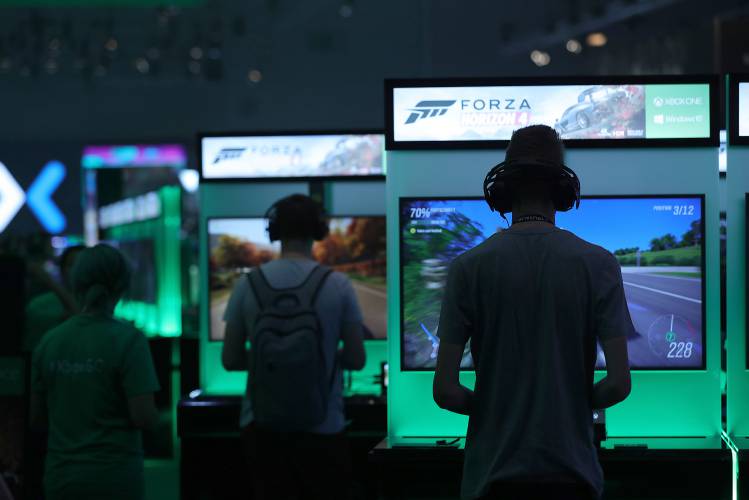
Gamers play “Forza Horizon 4” computer games using XBox consoles at the Microsoft stand at the Gamescom gaming industry event in Cologne, Germany, in August. MUST CREDIT: Bloomberg photo by Krisztian Bocsi
Hytale Developer Hopes the Game Will be Compared “Less and Less” to Minecraft Over Time
Hytale developer Hypixel Studios talked to DualShockers about the game, giving us their thoughts on comparisons between it and Minecraft.
In a recent interview with DualShockers, Hytale Publishing Lead Chris Thursten talked about the workings, thoughts, and actions behind the creation and development of Hypixel Studios’ upcoming game. We asked Chris how the team felt about the game’s constant comparisons to Minecraft since its announcement and how far they were planning to stray from those origins.
“It makes sense that people will make the comparison, but blockgames are a genre and we believe there’s plenty of space for something new,” says Chris Thursten. The team originally found its footing through the creation of Minecraft server network Hypixel, which grew to become the largest server on the hit game and amass tens of millions of players.
Of course, with those origins it’s hard not to compare Hypixel Studios’ upcoming title to Minecraft and the team understands that. However, Thursten tells us the developers are hoping for these comparisons to die down as Hytale becomes its own product and recognizable brand.
“Hytale is its own game, and over time we expect that the comparison will be made less and less. We’ve got a huge amount of respect for Minecraft, Mojang and Microsoft – there’s definitely space for both to coexist!”
It’s important to note that Hypixel Studios are indeed planning on keeping Hytalesupported in the long run. This is similar to Minecraft, which has developed and pumped out regular updates for just under a decade though support recently ended on legacy platforms. It’ll be great to see just how fleshed out this game can become, even more than the incredible base features we’ve seen in the announcement trailer.

The game will be launching with an extremely huge amount of content and tools for players to immediately stick their toes in and get to creating alongside playing. The team’s current goal seems to be pumping out an incredibly large amount of baseline content and then allowing players to thrive in their custom tools that will be releasing alongside the game.
The team will be “providing lots of support for the game after release,” Chris Thursten told DualShockers. “[Hypixel Studios will] discuss more details about this further down the road!”
According to the official description of the game, Hytale “combines the scope of a sandbox with the depth of a roleplaying game, immersing players in a procedurally generated world where teetering towers and deep dungeons promise rich rewards throughout their adventures. Hytale supports everything from block-by-block construction to scripting and minigame creation, delivered using easy to use and powerful tools.”
Our full interview for the game will be coming to DualShockers in the coming days, so make sure to stay tuned.
Roblox versus Minecraft: Which One’s The Supreme Sandbox Game?
Sandbox games are an interesting category because they allow players to test their own imagination. These games usually have few to no limits and they are great for players of all ages. There are many sandbox games out there, but today we are going to discuss two of the most well-known ones: Roblox versus Minecraft. Let’s compare these two.
Price
The cost is an important factor for many players. If that is the case for you, there’s a big chance that you will appreciate that, up to some point, Roblox is available for free. On the other hand, if you want to play Minecraft you will need to spend $26.95 to purchase it. In Roblox you will be able to play a couple of levels for free.
Are they kid-friendly?
Sandbox games are usually great for children, and these two are no exception. However, you should keep an eye on them. For example, your child might look up content related to the game. Minecraft and Roblox have huge fanbases so you need to make sure that your kids access safe content outside of the game.
You should also know that Roblox also has ads. Violence exists in both ways, although there is nothing graphic or scary.
Game Modes
You can decide how you want to play these games. Roblox comes with two game modes: creating and playing. If you want to develop your creativity, the creating mode is usually recommended. The playing allows you to play games designed by other users.
Meanwhile, Minecraft comes with three different difficulty levels. There are is also a lot of content online that can improve your game. From mod packs that can be used to add new things to your game, to online tutorials that can show you how to play.
Weird Faces, Classic Camera Angles And Other Mods For Resident Evil 2
Modders are magical. In only a short amount of time after Resident Evil 2 was released, they have been able to create some really interesting and strange mods for the remake.
Not all of these mods are necessarily helpful or needed, but not all mods need to fix a game. Sometimes I just want a mod to really mess up my character’s face.
Outstream Video
00:0000:00
Weird Faces
This mod was featured recently in an episode of Highlight Reel, Kotaku’s weekly series about funny and impressive clips from video games. Still, I wanted to include it because it just looks so amazing and bizarre.
The creator of this mod, DPO23, has released a new video showcasing his strange creation and I can’t stop watching their mouths…..they scare me. This mod reminds me of some the Source animated machinma folks have made in the past. Except now the faces look more real and that makes this all funnier and more disturbing.
Old Camera Angles
The Resident Evil 2 remake takes a lot of inspiration from Resident Evil 4,including having an over the shoulder camera angle. But modder Enveloping Sounds has created a mod that takes RE2 back to the 90s.
This fixed camera mod even adds in camera shake when shooting. It’s impressive and seems to be working with both Claire and Leon. The mod hasn’t officially released yet, but hopefully it comes out soon. I’d be curious to play RE2 remake with this more classic camera angle. I feel like Mr. X would be even more terrifying.
Playing As Different Characters
Resident Evil 2 will receive a future update which will add new characters and stories to the game. For those who don’t want to wait, modders are allowing players to jump into the shoes as various Resident Evil 2 characters.
Want to play as Ada Wong throughout the entire game? You can do that just that!
Other mods let players jump into the shoes of Sherry, the little girl featured in RE2. Although now with this mod she can use a mini gun.
There is even a mod that lets fans play as the big armed soldier himself, Chris Redfield. This mod is possible because players found his model in the files of RE2. Now with this mod you run around Raccoon City as Chris Redfield. Chris is most likely a leftover of RE7 and RE2 using the same engine. Still nice to see the big in Resident Evil 2 remake.
Resident Evil 2 has only been out for a few weeks and players are already creating mods that change the game in some wild or cool ways. I can’t wait to see what these creative modders can cook up after a few more months.
Minecraft Finally Adds Composting
Minecraft was released in 2009 and since then has been updated constantly. Updates have added new worlds, new creatures, modding tools and more. But finally, after 10 years of waiting, Minecraft finally has composting.
Sure, the last major update for Minecraft added cool underwater sea life, but can a dolphin turn useless plants into fertilizer? No. Instead you’ll need the new composter block. This new block, which was added in the latest PC snapshot update, allows players to turn old plants and veggies into useful bone meal, which in Minecraft can make plants & trees grow faster and bigger.Outstream Video
00:0000:00

The new composter can be built using a few pieces of wood and fencing. Once built players simply throw in some unwanted seeds, plants or food into the wooden box. Once enough organic materials has been added players are able to harvest some bone meal. How plants and seeds become bone meal is just another strange Minecraft mystery. Best not to think about it.
Fans had already created mods adding their own custom composter blocks into the game, like this mod added last year. But now composting is part of the vanilla Minecraft experience.
While the new composting block is useful for turning excess crops into bone meal, players are also using the new block for decorations purposes. Some Minecraft fans think they look like bee hives and are using the compost blocks as fake bee hives.

Currently, if you want to do some composting yourself, you’ll need to play the Java version of Minecraft and activate snapshots in the Minecraft launcher. Though like most snapshot features, these compost blocks will be added to other versions of the game eventually.
Change the Game: Using Minecraft to Teach Students with Autism
This article is part of the upcoming guide Game-Based Learning: Preparing Students for Their Future.
I find it baffling that in 2019 I still have to explain why it’s important to play with students, especially when Fortune 500 companies are gamifying their workplace and their customer outreach, profitable gamer-culture on YouTube is on the rise and colleges have eSports teams.
It’s even more baffling when you acknowledge that throughout history, renowned philosophers and educators—including Plato, Comenius, Locke, Rousseau, Froebel, Piaget, and Papert—have lauded the power of play in teaching, especially for young learners. Modern research has continued to demonstrate that playful learning improves educational outcomes, even more so when it’s digital and multi-modal. I’ve certainly found that to be true in my years teaching non-traditional learners.
Modern research has continued to demonstrate that playful learning improves educational outcomes.
Despite popular myth, games actually discourage negative behaviors, benefit mental health and improve social skills. Of course, not all games are created equal. Certain elements are consistently present in quality gamesand quality learning tools. The best games are just fun, and the learning is almost invisible. I’ve always felt that the most powerful justification of learning through play is intrinsic motivation.
This is important because school tends to focus on extrinsic rewards like grades, stickers or candy, which are ineffective and possibly harmful to a student’s long-term educational needs. Games can help internalize motivation, building student perseverance and grit. Think about a child still trying to get Mario to make that jump after falling fifteen times. That same student may give up in class after one half-hearted try.

For these reasons and others, I have long sought to use games, both analog and digital, to instruct my classes filled with students who are non-traditional learners, many of them with autism. Not only do games bring learning to my students in ways that are unobtainable in direct instruction, but they also promote social connections through play and reinforce the development of 21st century skills. Perhaps better called essential modern skills at this point, these are particularly embedded in digital games. Since my early teaching days, I have sought to instruct in an open environment, allowing choice and personalization for hands-on and playful learning. With this same intention, I introduced Minecraft into my classroom.
Not only do games bring learning to my students in ways that are unobtainable in direct instruction, but they also promote social connections through play and reinforce the development of 21st century skills.
Minecraft Education
I learned about Minecraft when I overheard students expressing excitement about playing it outside of school. I decided to check it out for myself. I didn’t really understand it at first, but it seemed like a good way to begin teaching some of the design principles I modeled in my classes. So it began as STEM design challenges for my older, more adept students. Soon though, I realized it could be used for much more. I had skilled students recreate historic moments and allowed other students to explore and learn from those creations.
It’s important to recognize that, even as the gaming universe continues to expand, Minecraft stands as a unique experience in digital games. I can think of no other game that exemplifies creativity and autonomy in play in quite the same way. I have heard it compared to digital LEGOs (another worthwhile classroom tool) which is apt, as they both provide an open space for students to easily create directly from their imagination the world as they envision it. And while I love LEGOs, Minecraft is definitely easier to build in scale and clean up, not to mention less likely to hurt your foot in a misstep. Minecraft gives children a way to use their creative faculties in an environment unbound by rules.
I hit upon real success when I began to apply it to social-emotional learning. I would come to realize that the community is one of the most powerful, as well as one of the most precarious, parts of the game. The collaborative environment that could be so beneficial for learning could also be littered with many of the other negative issues we find elsewhere online. So, I paid for a small private server for my students to explore and work together safely.
Minecraft, Autism and 21st Century Learning
I was unaware of this early on, but eventually discovered that I wasn’t the only one who found Minecraft useful as an assistive technology for people with autism. Research shows how players “modded” their environment to “support self-regulation and community engagement.” And problems inherent in an open online setting, like bullying, oversharing and miscommunication, were resolved when I learned that an education editionhad been developed for Minecraft and that, even within the consumer version, a private community had been created specifically for people with autism called Autcraft.
I’ve found Minecraft to be an exemplar of those 21st century learning traits mentioned previously. The game personifies creativity and collaboration. If designs are complex, they require planning and critical thinking to solve such challenges as determining what material will meet our aesthetic or how we can adapt to the natural environment around us. When the teacher requires other design challenges—accounting for material cost or using sustainable materials—students must access higher order thinking skills.
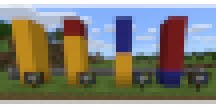
One of the major benefits of the game, specifically for children with autism, comes with communication. Chat features are enabled with speech-to-text functionality, which lets struggling readers and writers plan and participate with the community at their own pace without the pressure of a face-to-face conversation. In fact, the game dynamic of signs that relay information is similar to the way we use vocabulary on real-world objects to teach language in early-childhood and language-challenged classrooms. This encourages social interaction in a comfortable manner within the game’s well-defined rules. Players are not just conversing for the sake of it but in an effort to successfully complete their in-game projects. That is huge for these students. And I have personally seen improvement in written language and increased verbalization in students with limited verbal skills through Minecraft game-play.
Practical Advice
One of the major benefits of the game, specifically for children with autism, comes with communication. Chat features are enabled with speech-to-text functionality, which lets struggling readers and writers plan and participate with the community at their own pace without the pressure of a face-to-face conversation.
I have now become skilled enough to create Minecraft worlds that engage my students in the type of learning I want to see, but I still make sure to allow enough freedom for them to have a choice in their learning. One of my projects has students with autism, who struggle with personal identity, creating a Minecraft journey that begins with self-portraits and personal narratives of their lives and families. Originally I had students do video walkthroughs to document and explain their work, but now I use speech-to-text apps to copy their ideas into writing for the built-in portfolio. There are several other game adaptations I have used from simple color-coding to using adaptive switches that have improved the game’s accessibility.

One of the most useful ways I’ve incorporated Minecraft is in recreating local environments like the school, home or a grocery store. Students with mobility or behavioral issues can now traverse those environments safely in the virtual world before attempting it in the physical world. It has really helped students feel connected to the world in ways that weren’t always possible. I loved the fact that my students were no longer confined to wheelchairs or leg braces; they could walk, create and even fly. It’s a world where they are free from ridicule, free from their real-world struggles and free to create a world that they desire. That freedom is why Minecraft continues to be a crucial tool for me and my students.
“Minecraft has opened up Java to a range of people who probably don’t even realise the skills they have acquired through it”
Microsoft, which owns Mojang, the company that makes Minecraft, recently released two parts of Minecraft’s code in library form. So what does Minecraft have to do with the Java community? For starters, Java-based Minecraft has spawned a new generation of Java developers. We talked to Mark Little, VP of Engineering and JBoss Middleware CTO at Red Hat about how this helps to shine a positive light on the Java language.
JAXenter: Minecraft is not necessarily the first thing one would think of when talking about Java but, as it turns out, this popular game has what it takes to breathe new life into Java. Can Java-based Minecraft spawn a new generation of Java developers?
Mark Little: Yes, absolutely. In fact, if you look at some of the articles that came out in 2014 when Microsoft announced they were acquiring Minecraft for $2.5 billion, you’ll find several which mention the developer community as one of the key reasons behind it. I’m not sure about the demographics of the Minecraft community but certainly back in 2015 when Arun Gupta, his son, myself and my son attended Minecon and gave classes throughout the day on how to mod Minecraft many of the attendees were towards the younger end of the age spectrum.
8-Bit Hordes Review – Medieval and Middling (PS4)
With its colorful and boxy voxel-based aesthetic, 8-Bit Hordes could be the introduction to the real-time strategy (RTS) genre that hooks otherwise uninterested Minecraft fans. It also made the jump to console, so for those among us who game exclusively on PS4, this could likely be an introduction to the RTS genre, one typically seen more in the PC environment.
As I jumped into one of two campaigns, I quickly realized that this was my introduction to the RTS as a genre. I’ve had consoles for my entire life, but never owned a PC powerful enough to run new AAA games. I’m a big turn-based tactics fan, so the act of devising a plan of attack and moving troops into position is familiar for me. But, learning to juggle mining and building and attacking was new.
It isn’t the series’ introduction to console, though. Developer Petroglyph previously released the first 8-Bit game, 8-Bit Armies, and has the series’ third entry, 8-Bit Invaders, coming to PS4 at the end of the month. So, for those who are just getting acquainted, there’s plenty more where this one came from.
Meet 8-Bit Hordes
But, does 8-Bit Hordes work as an introduction? For Minecraft fans, maybe? There are minecarts, which you, as the God-like commander of either the Lightbringers or the Deathsworn, will send to gather resources from all over the war torn maps. Once the materials have returned to your fortress, you’ll use them to create new units and new structures.
If you’ve learned resource management from Mojang, this simplified take may not do much for you. The mysterious material you extract from the ground can be used to build farms, barracks, dwarves, and dragons. This is a departure from Minecraft and, as I understand it, most real-time strategy games: you won’t need different materials to build different things and you won’t be combining distinct compounds to craft something new; like some kind of minable atom, the easilyobtainium that runs in crisscrossing veins beneath the 8-bit earth is the building block comprising everything.
That’s not really a negative. As 8-Bit Hordes may be the first RTS that console-only players get their hands on, the simplified approach works. And, laudably, Petroglyph pretty successfully mapped RTS controls to the Dualshock 4. Pressing R3 brings up a map with six sections you can transport among, making it easy to switch between troops on opposite sides of the map. L1 and R1 bring up structure and unit wheels respectively, and the triggers allow you to fix or scrap your buildings. It all maps pretty neatly and I never felt hamstrung by my lack of a mouse and keyboard.

On Your Own
I did, at times, feel hamstrung by the game’s tutorialization. Some of that had to do with presentation; 8-Bit Hordes joins the long list of console games with font so small you would need opera binoculars to read it. When in doubt about a unit’s strengths and weaknesses or the nuances of the tech tree, I was frequently standing up to walk closer to the TV, like Sherlock Holmes with a magnifying glass except the only crime to be solved was the one committed against my eyesight.
But, more substantially, the game quickly drops players into the deep end. After a series of painfully slow tutorial missions, 8-Bit Hordes’ campaign instantly ramps up the difficulty with a series of missions that will have the newly initiated banging their heads against the blocky walls.
Actually, none of them are all that difficult. Each just has one trick that it requires to learn. If you miss this tell, which sometimes are hinted at in the tiny blocks of text that serve as mission briefing and sometimes aren’t communicated at all, you’ll find yourself outnumbered and outmatched.

Maybe Petroglyph is assuming that more experienced players will know what to do. That’s fine, but it doesn’t match up with the heavy-handed tutorialization or the game’s marketing as a beginner-friendly introduction.
The Tightrope
That said, when those missions click, they really click. Given that each has a tell that you’ll need to discover, they can feel like puzzle boxes demanding a solution. When you find that solution and begin to steamroll the enemy hordes, it can be deeply satisfying.
But, it can also quickly become boring. Once you figure out the trick, you’re often just throwing units at your opponents with little regard for strategy. Most missions ended with me walking up to my opponent and attacking their fortress until it fell apart. I didn’t need to flank them or sneak or use any sort of cunning. I just needed to figure out one thing. That’s all the game demands.
Playing 8-Bit Hordes then is a bit like walking a tightrope with boredom on one side and frustration on the other. There are occasional moments when the game offers an exciting balance. But most of the time it fails to watch its step.
8-Bit Hordes review code provided by publisher. Version 1.0 reviewed on a Standard PS4. For more information on scoring please see our Review Policy.
| 6.5 |
| Battles are occasionally really satisfying.RTS interface works on DualShock 4.Most battles have one trick that, once mastered, makes them boring and easyThose battles are time-consuming and frustrating if you don’t know the trickHandhold-y tutorialization gives way to missions that leave you to your own devicesFont is way too small |
Minecraft update temporarily enabled wallrunning
Minecraft’s “19w04a” Java snapshot update, which rolled out on Thursday, enabled wall running… but not intentionally.
While the Java snapshot update added a handful of things like stone cutting and fixing unlit campfires so they no longer burn you, nowhere does it mention wallrunning, leaving players to surmise that it must have been an unintended side effect of the recent changes. Click here to take a look yourself (thanks, Kotaku).

“Just for context, this isn’t a trick or a prank or anything,” reported Minecrafter NatalieZem, who shared a brief video of wallrunning on Reddit. “In the recent snapshot, you can’t jump while pressing against a block. And apparently not being able to raise your elevation also means you can’t lower it either. Try it for yourself: All you need to do is stay sprinting into the wall and you can move along it. Here’s another video showing how easy this is to replicate.”
The bug’s seemingly been resolved now thanks to the arrival of snapshot 19w04b, much to many players’ disappointment. “This would be a cool feature though,” Redditer JamesBeYeezy opined, while owlindenial had hoped “it’s not reported. Ever.” “Would be pretty cool if implemented properly,” daydreamed Everscream.
The people have spoken, Mojang…

